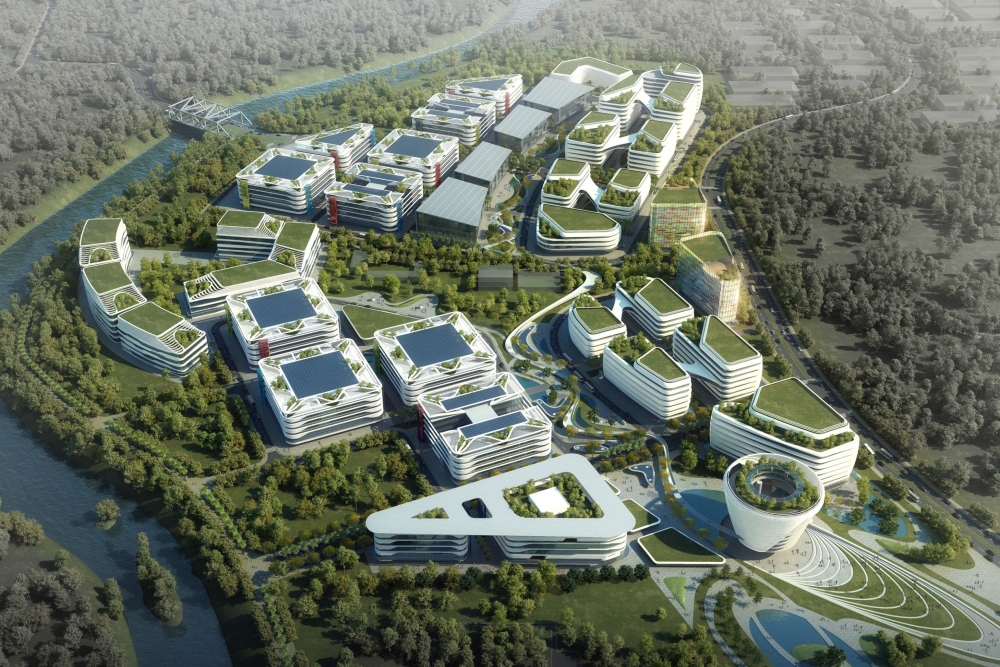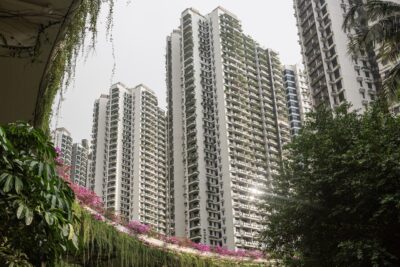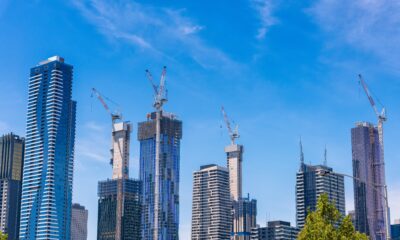Rise of the digital economy and its impact on the workplace
Prof. Jason Pomeroy shares his insights on the fifth-generation offices of today

The advent of the digital revolution
The agricultural, industrial, technological and digital revolutions have each yielded fundamental shifts in the way we go about our daily working lives, and in the process spurred global economies in the ensuing centuries.
18th century labour-intensive farming processes and traditional hierarchical systems of landlords and tenant farmers gave way to 19th century manufacturing processes in the hands of prominent industrialists in the world’s first industrial revolution.
Central banks that recognised the economic upside of supporting tradable mass-manufactured goods transformed the fabric of our living and working environments, and cities became places of production and industry. People migrated from villages to cities to seek fame, fortune and a supposedly better life.
Subsequently, technological advances and a greater shared equity came to characterise a 20th century technological revolution that further optimised product manufacture and business outputs through the mass production/adoption of computers in the workplace and the introduction of the World Wide Web.
Apple’s Macintosh and Microsoft’s MS-DOS personal computing sought to help office workers with their workload by offering a means to work ‘remotely,’ though arguably time and place boundaries between the office and the home became increasingly blurred, as gaming and alternative recreational past times took on a computerised definition.
But it was the 21st century where technology has arguably reached a zenith, and has been coined the fourth industrial revolution. It has been marked by a shift from ‘the analogue’ to ‘the digital’. Its influence in everyday life can be seen in the phones we communicate with, the music which we listen to, and the programmes that we watch. The term ‘smart’ has become an appendage to virtually every physical device that each seek to make our lives easier.
Unlike its revolutionary forbears, the digital revolution has taken place in a shockingly shorter period of time and has seen more revenue generated in the last 20 years of the internet than the entire period of the industrial revolution.
The five generations of office
The digital economy is valued at more than USD3 trillion, and its appeal to the sharing culture of millennials and generation Z has further borne influence on not just a global, digitally connected audience but has also impacted the way we conceive and work in the workplace.
But in order to understand how far we have come, it will help to set the evolution of the workplace in the form of context with some key examples. One could argue this is a Darwinian theory of workplace evolution – where the strongest ideas survive and adapt to external forces.
The modern office as we know it today started in the early 20th century – with buildings like the Equitable Building, New York, being a hallmark of the first generation of office. These high rise offices were characterised by thick external load bearing walls and window openings that sought to provide natural light and ventilation to a modern workforce that sat rank and file at their desks.
The second-generation of office reflected newly implemented zoning laws of 1916 that sought to maintain natural light and ventilation to the streets and provide setbacks to reduce risk of fire spreading from building to building – yielding a tiered wedding cake design as characterised by The Chrysler Building, Manhattan. Early forms of air conditioning and curtain walling started to influence both structural and services strategies.
By the third-generation, the ubiquitous glass box office that one may associate with many a financial district today became an expression of modernity, power, prestige and technological advancement.
By the 1960’s, the glazed curtain wall office block, as characterised by The Seagram building, Manhattan, was by now in full swing. As the skyscrapers reached for the sky, so too did these gas-guzzling behemoths’ correlating energy and water bills. As a reaction to spiraling resource consumption and poor thermal performance, an age of environmental-consciousness left its imprint on the fourth generation of offices, as characterised by 1990’s eco skyscrapers such as The Commerzbank in Frankfurt, Germany. This generation heavily prioritised environmental performance through the use of natural light and ventilation and the incorporation of winter gardens for their socioenvironmental benefits.
So what of the fifth-generation? One can argue that the previous four generations can all be characterised as objects that shaped the way man and woman went about their average working day, rather than spaces and places that were shaped by the people working there.
Hacker Dojo in California’s Silicon Valley and the Amazon office in Seattle are examples of the fifth-generation offices whereby voluminous spaces become ‘places’ as they encourage heightened level of flexible working, knowledge sharing and collaboration in an environmentally sensitive campus arrangement that is more akin to the medieval courtyard campuses of Oxbridge than its 20th century office counterparts.
Lessons learned: the six parameters
So what can one glean from the above historical overview by way of improving ones office environment? The triple bottom line arguably does not go far enough and should embrace 3 further pillars – that of Space (given the increasing spatial depletion through urbanisation), Culture (given cultural identity erosion through increasing globalisation) and Technology (given technological disruptions that can enhance our daily lives). So let’s consider these as guiding parameters:
Social
Taylor’s systemisation and desire to maximise efficiency and productivity left out the vital consideration of the workforce, and paradoxically missed the point that interpersonal relationships and employee motivation can improve productivity. Thankfully the workplaces of today should realise that a balance of social amenity, recreation, and an egalitarian management approach works wonders for a company’s productivity.
Spatial
The social parameter naturally played a fundamental role in reshaping the interiors of offices. Whilst social values of privacy and individual space were considered, the ubiquitous cubicle of the 70’s-80’s office was arguably a modern expression of Taylor’s systemisation. The digital revolution has however disrupted this pattern, and the reinterpretation of college campuses that promote adaptability and social cohesion moulds with Generation Z’s embrace of the sharing economy.
Environmental
The hermetically sealed, artificially lit and ventilated glass box is increasingly being challenged by more nuanced façades that act as valves and filters to natural light and ventilation whilst embracing pockets and voids of urban greenery. Skycourts and skygardens not only offer environmental benefits of attenuating rainwater, reducing temperatures and absorbing noxious pollutants in the atmosphere, but also provide alternative social green spaces for collaborative working or recreation.
Technological
While desktop computers revolutionised the workplace and heightened productivity , the personal laptop and smartphone disrupted our working patterns further to allow us to work where we want, when we want without any need to be in the office at all. And when we are in the office, big data and the use of smart technologies can allow us to control our immediate office environment from the comfort of our smart phones
Economic
How many times will you use the boardroom for those power meetings? And those individual meeting rooms? And how many break out spaces will you need? As we can increasingly role-play as worker bees buzzing from studio to cafe to office, the real estate economics of your typical office will be challenged. Spaces will be scaled down, shared, and 3rd party revenue opportunities considered as alternative sources of income.
Culture
Despite digital disruption, there will always be the need for offices, given the very human need for copresence. The culture that is rising to the surface of offices is a culture of innovation – regardless of industry. Designers, and the businesses that are hiring them are realising that it is the collaborative efforts of individuals that provide the real innovations and breakthroughs; and the spaces and places neared to be geared for this. We have had the privilege of being at the cutting edge of this movement, from the microscale of buildings such as Alice@Mediapolis in Singapore, which effectively acts as a vertical green office ‘campus’ that creates a complete workplace ecosystem for novices through to unicorns; through to the macroscale of 3rd generation smart city masterplans like BSD Digital Hub which was coined by president Jokowi as the ‘Silicon Valley of Indonesia’. A culture of innovation will hopefully help continue the line of development for the workplace.
About Prof. Jason Pomeroy
Prof. Jason Pomeroy is an award-winning architect, academic, author and TV personality at the forefront of the sustainable built environment agenda. He graduated with Bachelor and Post-Graduate degrees with distinction from the Canterbury School of Architecture; received his Masters’ degree from Cambridge University, and his PhD from the University of Westminster. He is the Founding Principal of Evidence – Based Interdisciplinary Sustainable Design firm Pomeroy Studio; and sustainable education provider, Pomeroy Academy. Jason also works to raise awareness of the cultural role architecture plays in society. He is a consultant and host of the popular architecture/travel TV series’ ‘City Time Traveller’ (Series 1 & 2) ‘City Redesign’ and ‘Smart Cities 2.0’, which has aired throughout Asia and the Middle East. His most recent short series of videos, HABITAT, addresses the significant urban challenges of the 21st century, to highlight the issues revolving culture, innovation and mobility in the context of BSD City in Indonesia.
This article originally appeared in asiarealestatesummit.com
Recommended
Meet the vagabond architect behind India’s housing scene
Vinu Daniel is helping to shake up India’s home building setting
Where Asian real estate stands in a fragmented, warmer world
Asia’s real estate industry faces many and varied challenges as external factors continue to bite
6 sights to see in Singapore’s Marine Parade
Handily located Marine Parade has emerged as a vibrant investment choice in the Lion City
There’s a township dedicated to health and wellness in Malaysia
Property seekers have their health needs catered for at KL Wellness City








